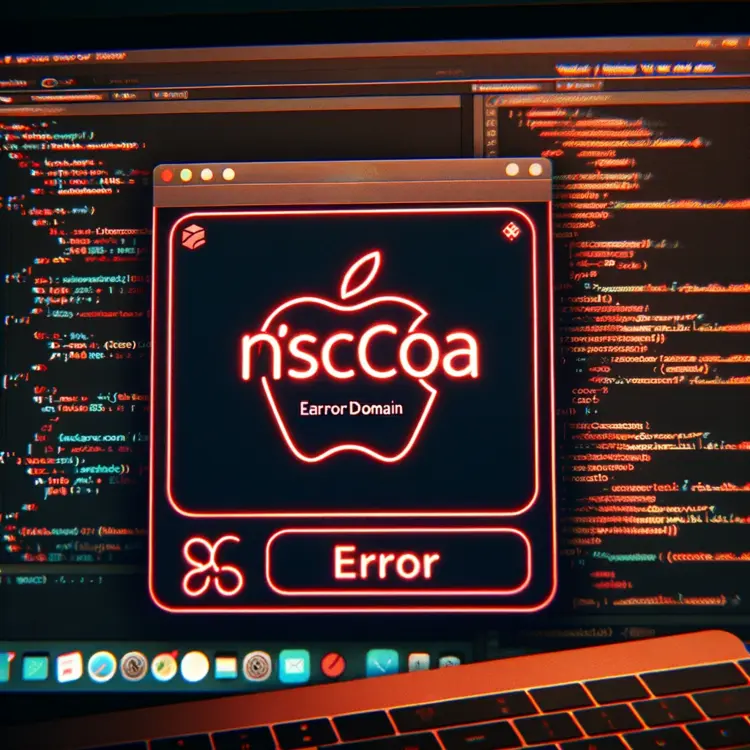How To Solve NSCocoaErrorDomain Error Code 4?
Developing applications for iOS platforms can be rewarding yet challenging for app developers. Among the hurdles they face, encountering errors is a common scenario. One such error that often triggers frustration is the NSCocoaErrorDomain Error Code 4.
This specific error, signifies the issue of a specified shortcut not being found during application execution, primarily affecting macOS. Let’s move deeper into understanding this error, its causes, effective handling methods, preventive measures, and more to equip developers with comprehensive solutions.
What is Error Code 4?

Error codes are pivotal in pinpointing the nature of errors within an application. Error Code 4, residing within the NSCocoaErrorDomain, precisely indicates the occurrence of the “could not find specified shortcut” error message. It serves as a beacon, shedding light on the encountered issue within the application.
What is NSCocoaErrorDomain Error Code 4?
The “NSCocoaErrorDomain Error Code 4” is like a computer saying, “Oops, I can’t find the file!” It happens when a program is trying to find or use a file that isn’t there, or it’s in the wrong place. It’s like looking for your favorite toy and not finding it where you thought it was! To fix it, you have to make sure the file is in the right spot for the program to find it.
NSCocoaErrorDomain Error Code 4 is a specialized error type occurring during iOS application development. It’s part of the error management system within the Cocoa Framework, a fundamental component for iOS/macOS development.
This domain encapsulates errors related to various functionalities like data serialization, networking, and system operations. Errors within this domain are communicated through NSError objects, providing essential information such as the error code, domain, and additional user-related information.
The Cocoa Framework, comprising various platforms like macOS, VisionOS, WatchOS, and iOS/iPadOS, encompasses distinct libraries termed “Frameworks”. It specifically deals with errors arising in the Cocoa Framework and assists developers in identifying and resolving them efficiently.
How to Handle NSCocoaErrorDomain Errors in Swift?
Swift offers robust techniques to manage this Domain errors effectively. Using the do-catch block is one such method. For instance, encountering a “File Not Found” error could occur when accessing an image file in an image editing application.
NSCocoaErrorDomain Error Causes
Numerous factors contribute to the error, including deleted or moved sources, incorrect file paths, security limitations, software conflicts, insufficient permissions, etc. Identifying these causes is crucial for effective resolution.
How to Resolve NSCocoaErrorDomain Error Code 4?
Techspotty presents several methods to address Error Code 4. Techniques include:
- System restoration.
- Application reinstallation.
- Deleted file recovery.
- Fixing broken registry keys.
- Upgrading applications and systems.
- Employing reliable antivirus programs.
- Checking shortcut paths.
- Updating macOS.
- Resetting preferences.
- Seeking technical support if necessary.
How to Prevent Error Code 4?
Preventive measures play a pivotal role in minimizing the occurrence of Error Code 4. Regular system backups, timely updates, diligent adherence to app guidelines, and double-checking shortcut paths are recommended to mitigate these errors.
Bottom Line
Encountering NSCocoaErrorDomain Error Code 4 can be frustrating. However, understanding its nature and implementing appropriate handling and preventive measures can alleviate these issues, ensuring smoother application development.
FAQs
What is the significance of NSCocoaErrorDomain Error Code 4?
Error Code 4 indicates the failure to locate a specified shortcut within the application, primarily impacting macOS.
How does Swift aid in handling NSCocoaErrorDomain errors?
Swift offers effective error management techniques, like do-catch blocks, to handle NSCocoaErrorDomain errors efficiently.
What are some common causes of NSCocoaErrorDomain errors?
Deleted or moved sources, incorrect file paths, security limitations, and software conflicts are common causes of errors.
How can one prevent NSCocoaErrorDomain Error Code 4?
Regular backups, system updates, adherence to app guidelines, and thorough verification of shortcut paths help prevent this Error Code 4.
What steps can be taken to resolve Error Code 4?
Methods include system restoration, application reinstallation, file recovery, registry key fixes, software upgrades, antivirus usage, shortcut path checks, and macOS updates.
Why is understanding error codes crucial in application development?
Error codes provide essential information about encountered issues, aiding in efficient debugging and resolution during application development.
How can one efficiently manage NSCocoaErrorDomain errors within the Cocoa Framework?
Proper error categorization, understanding error domains, and employing appropriate handling techniques are vital for managing errors effectively.
Are there specific techniques to troubleshoot NSCocoaErrorDomain errors?
Yes, techniques such as regular system maintenance, tracking file systems, verifying shortcuts, and implementing error checks effectively troubleshoot errors.
What role do backups play in preventing NSCocoaErrorDomain Error Code 4?
Regular backups assist in restoring systems to previous functional states, minimizing the impact of Error Code 4.
Can software conflicts contribute to NSCocoaErrorDomain errors?
Yes, conflicts among different software components can lead to errors, emphasizing the importance of system and application compatibility.

